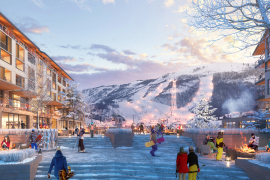Whether it’s your first time or you are a seasoned developer, buying and developing real estate typically evolves in an organic fashion. A property owner may want to build her own restaurant or his own office building. Maybe you’re finally ready to give the green light to business idea you’ve always dreamed of turning into a reality. It all sounds fantastic. How hard could it be? Unfortunately, regardless of how great your development plan probably is, one of the first major roadblocks developers usually face is unanticipated government restrictions that may or may not even make sense. Anything can be affected—the height of a building restricted to 20 feet, no BBQ restaurants allowed, no paint stores, no gyms or fitness centers, no neon signs. In some cases, limitations imposed by municipalities can ruin an otherwise ideal project. So, before you start your next development venture, allow someone who has learned from experience to share a few tricks to safely riding the roller-coaster of restrictions.
Why Restrictions Exist
Cities have designated areas throughout the community specifically zoned by use–property for residential, office buildings, retail shops and centers, and other commercial uses that real estate developers design and build to effectively match city ordinances and standards. Restrictions exist so that developments are built in the appropriate zones for their use.
A Way Around Certain Restrictions
As an alternative, some experienced real estate planners and developers choose a different path–to create a master plan that establishes guidelines for a larger scale project, which is then presented to the city for its approval. Common practice is for the master plan to have its own set of guidelines or CC&Rs (Covenants Codes & Restrictions). Broadly, the master plan is used to identify specific property for a specific use. The overall site plan lays out roadways, parking areas and ratios, streetscape design, walking and bike paths, landscaping, lighting, and beyond. Keep in mind, having a master plan never solves all your problems; in fact, sometimes it just raises new ones. It may even require your entire design be reviewed and approved to match an Architectural Standard established 20 years prior.
Things to Consider Before You Begin
When making decisions about buying and building on a property, always keep in mind that there will be many outside factors affecting your ultimate design. In my experience, some of the best ways to protect yourself and your development include the following:
- Always thoroughly review the CC&Rs.
- Hire a real estate attorney to read the fine print.
- Enter a real estate purchase with your eyes open for adjustments.
At the end of the day, restrictions are a bummer no matter who imposes them. But working collaboratively with cities builds trust and always ends up being worthwhile.
















